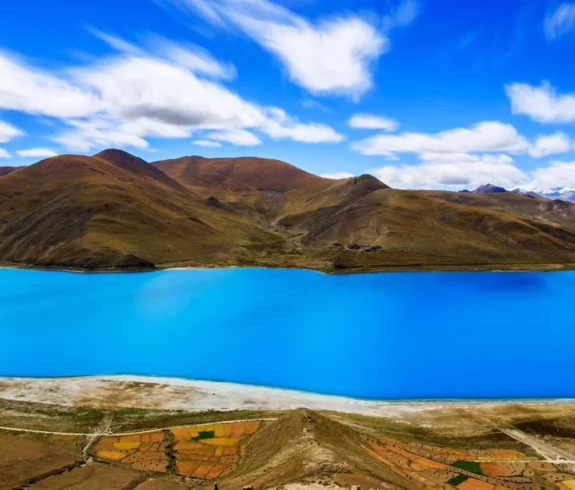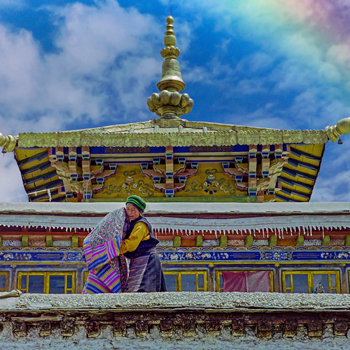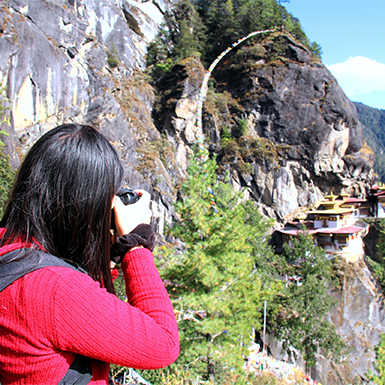As one of Tibet’s three great holy lakes, Yamdrok Lake has a long and colorful history. Located at 4441 meters, the lake is a sight with its vast expanse of clear blue water and spectacular mountain scenery. The lake is also a sacred site for Tibetan Buddhism, and it is believed to be where the four guardian spirits of Tibet reside.
The locals consider the lake a place of healing, and visitors come to pay homage to the deities that protect this majestic place. Its beauty and spiritual significance have earned the lake its well-deserved reputation as one of the world’s most beautiful and sacred places.
Location and Geography
Nestled upon the rolling hills of Shannan Prefecture, Yamdrok Lake lies in the quaint town of Nangartse County, just 110 miles southwest of Tibet’s profound capital, Lhasa. This immense freshwater lake is a sight to behold, boasting an area of 246 square miles and reaching up to a maximum of 45 miles in length. With its proximity to the old S307 roadway from Lhasa to Shigatse and Gyantse, Yamdrok Lake is essential to Tibet’s natural beauty.
The lake is like an expansive fan, widening in the south and tapering off in the north. It’s surrounded by majestic mountains and adorned with an array of islands, the largest of which is a sprawling 3000 square kilometers. On one island, there is a fortress – Dzong Pede; on the other, there is Sam Dinh Monastery, one of the most valuable shrines of Buddhism.
Sam Dinh Monastery houses only around thirty monks and nuns. This monastery is unique because it is the only one in Tibet with a female abbess. It was the abode of Samding Dorje Phagmo – Tibet’s most revered female lama reincarnation – who reigned supreme there.
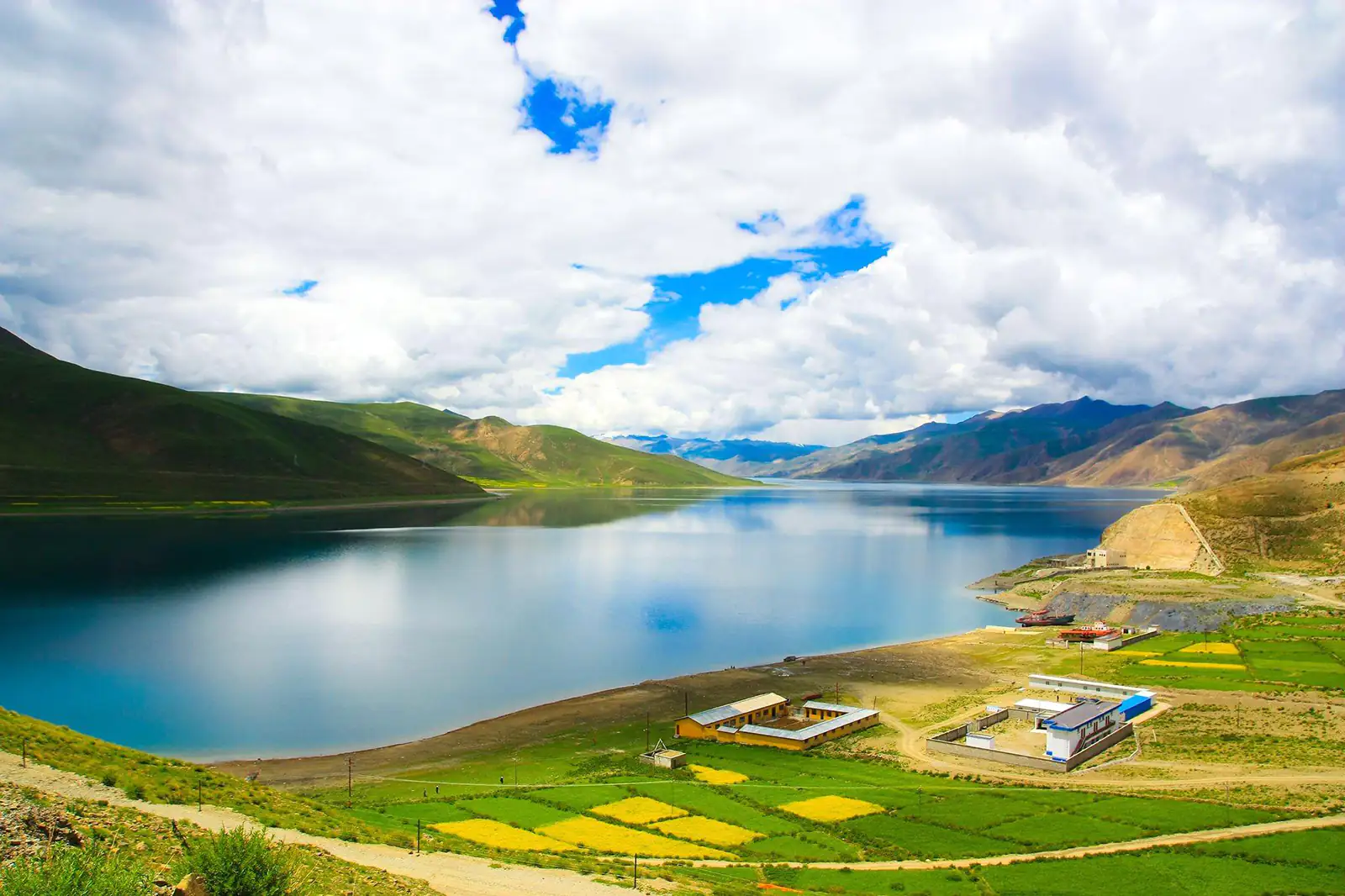
Legend
Legend has it that Yamdrok Lake was born from a divine being. This mystical creature departed from paradise one day and formed Yamdrok, a lake that was said to be in the shape of nine scorpions. Dakini Yeshe Tsogyal was fearful that every living thing within the lake would perish, so she gathered 7 Liang (unit of weight) of gold and made a wish for each one.
Using a powerful mantra, she combined all the lakes into one grand body of water, shaped like a scorpion held in the hand of Padma Sambhava, the messenger of Buddhism in Tibet during the 8th century.
This place has been dubbed the Scorpion due to specific names still linked to it. Particularly on Yuanbuduo Island, located at the core of the Scorpion, an old 16th-century Nyingma temple can be found. In the vicinity of the temple is the footprint of Padma Sambhava, a testament to its mysterious past.
Features of the lake
The beautiful turquoise waters of Yamdrok Yumtso Lake have been renowned throughout China as a symbol of heavenly beauty. The name itself is a poetic combination of four Tibetan words – “yam,” meaning superior, “drok,” meaning pasture, “yum,” meaning jasper; and “tso,” meaning lake – which together translate to “Jasper Lake of the Upper Pasture.” It’s no wonder the lake is affectionately known as the “Turquoise Fairy Earrings,” with its breathtaking views that seem to change with each angle.
Yamdrok Lake shines like a luminous gemstone from the nearby mountaintops, sparkling between the craggy rocks. Its unique shape is mirrored in its other names, such as Coral Lake or Green Jade Lake, for its winding streams and smooth, clean surface that shimmers like these precious stones.
Sunlight dances off the depths of this peaceful lake, creating mesmerizing and mysterious hues. It’s no wonder why locals see it as a source of spiritual energy, a vibrant and captivating sight to behold.
Yamdrok Lake and its three sisters, Kongmucuo Lake, Chen Co Lake, and Bajiucuo Lake, are inseparable. The sacred lake stretches up and around the mountains for over 130 kilometers, and under the ever-changing sunlight, it transforms into an array of shades, from various hues of blue to the most vivid and dreamlike colors.
Cultural Importance
The Yamdrok lake is of great significance for the citizens of Tibet – so much so that it can’t be overstated. When the Dalai Lama passes away, the monks responsible for identifying his reincarnate embark on a pilgrimage to the lake to seek divine direction in their quest. Here, on the banks of this sacred lake, the search for the new Dalai Lama is initiated.
In addition, every year, devout Buddhists embark on a month-long journey around the lake on horseback, which is comparable to a pilgrimage to Lhasa, in hopes that Buddha will provide luck and contentment in the coming year.
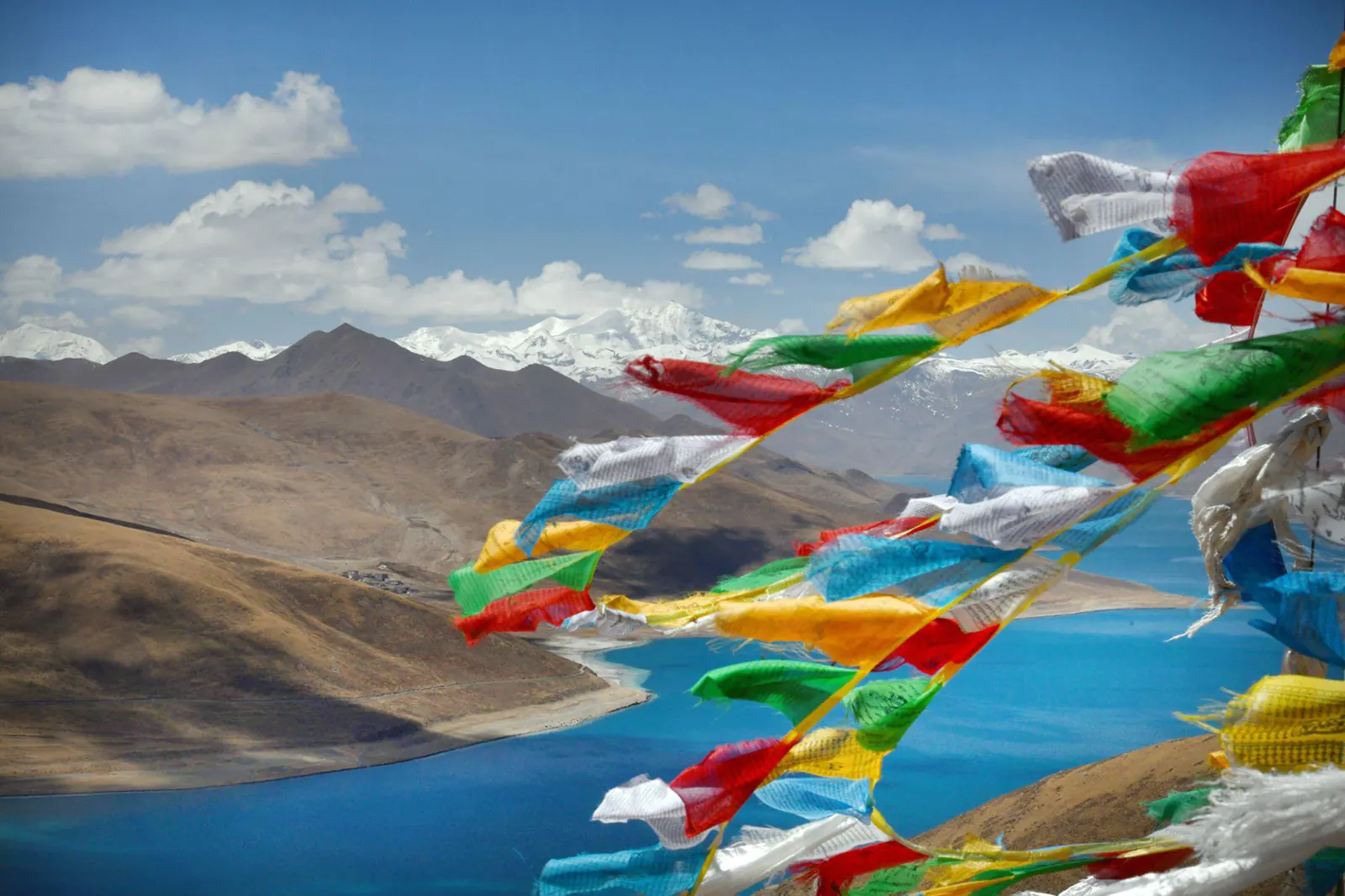
Economic Importance
The wondrous Yamdrok Lake serves as a source of sustenance for the local people, providing them with numerous shoals of commercially available fish from April to October, then sold in the markets of Lhasa.
Additionally, the lake’s islands serve as lush pastures for shepherds to tend their flocks. In 1996, the powerful Pai-Ti power plant was erected at the lake’s western end – making it the largest in all of Tibet.
How to get to Yamdrok Lake?
Unfortunately, there is no convenient way to get to Yamdrok Lake from Lhasa. However, you can rent a private car or use a travel agency to take you there. The adventurous journey takes around 2.5 hours, and you will have plenty of time to admire the stunning Tibetan countryside.
Just before you reach Yamdrok Lake, you will first find Kambala Pass, a place of breathtaking beauty. From here, you will be able to fully appreciate the sacred aquamarine waters of the lake that make it so famous.
You can then drive down to the lake’s shore and stroll. Yamdrok Lake is home to a vast array of wildlife, including rare birds, so keep your eyes peeled, and you might spot some incredible animals!
Just remember:
When visiting Yamdrok Lake, know the elevation can reach 5,000 meters above sea level. It is essential to speak to your doctor before traveling to this area. Unfortunately, the sanitation of the toilets at Kambala Pass and along the roads may not be of good up standards, so bringing hand sanitizer and tissues is recommended.
The area has limited food options, so take some snacks along the journey. Finally, please respect local customs and do not engage in fishing, bathing, or swimming in the sacred lakes, as water burials are common in Tibet.
